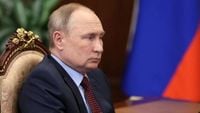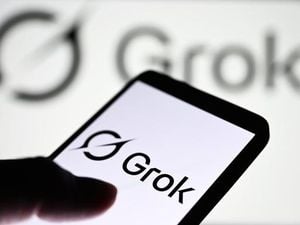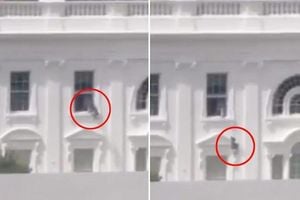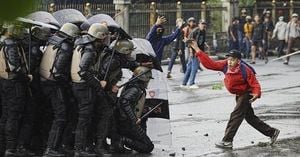In a striking display of unity that reverberated far beyond the walls of the summit hall, the leaders of China, Russia, and India gathered in Tianjin, China, on September 1, 2025, for the Shanghai Cooperation Organization (SCO) summit. The scene was heavy with symbolism: Indian Prime Minister Narendra Modi and Russian President Vladimir Putin, hand in hand, walked straight to Chinese President Xi Jinping, forming a close circle in front of a crowd of world leaders. Smiles were exchanged, laughter echoed, and, for a moment, the three largest powers outside the Western bloc stood together as if to announce a new chapter in global affairs.
This choreography was no accident. According to The New York Times, the summit brought more than 20 leaders from Central and South Asia, but the spotlight belonged to the trio of Xi, Putin, and Modi. Their camaraderie, analysts suggest, was meant for an audience well beyond China’s borders—most pointedly, the United States. “Optics is a key part of this summit, and the White House should grasp that its policies will result in other countries looking for alternatives to meet their interests,” explained Manoj Kewalramani of the Takshashila Institution in Bangalore.
Indeed, the context couldn’t be clearer. President Donald Trump’s administration had recently imposed a hefty 50% tariff on Indian goods, penalizing India for its ongoing purchases of Russian oil. The move left New Delhi searching for new friends—or at least showing the world it had options. “What few people understand is that we do very little business with India, but they do a tremendous amount of business with us. In other words, they sell us massive amounts of goods, their biggest ‘client,’ but we sell them very little,” Trump wrote on his Truth Social account, as reported by Al Jazeera. He added, “They have now offered to cut their Tariffs to nothing, but it’s getting late. They should have done so years ago.”
For India, the summit was an opportunity to signal that it isn’t beholden to Washington’s whims. Modi, ever the master of political theater, didn’t just join hands with Xi and Putin—he shared a car ride with Putin, spending 50 minutes in private conversation before their official meeting. “Conversations with him are always insightful,” Modi posted on social media, sharing a photo of their ride. According to Russian state media, Modi made a last-minute decision to join Putin in his Russian limousine, a move that was splashed across Modi’s social media accounts almost immediately. Later, Modi was even more effusive, telling Putin, “1.4 billion Indians are waiting with excitement” to welcome him in New Delhi in December. “It is a testament of the depth and breadth of our ‘Special and Privileged Strategic Partnership’ that even in the most difficult times India and Russia have stood shoulder to shoulder,” Modi said, as reported by The New York Times.
Putin, for his part, was equally warm, calling Modi a “dear friend” and describing the Russia-India relationship as “special and privileged.” He added, “Russia and India have maintained special relations for decades. Friendly, trusting. This is the foundation for the development of our relations in the future. These relations are absolutely non-partisan in nature, supported by the overwhelming majority of the peoples of our countries,” according to the Associated Press and ABC.
Yet, behind the smiles, the gathering was also a showcase of strategic maneuvering. President Xi Jinping, in his opening address, took aim at the United States, urging SCO members to oppose a "Cold War mentality, bloc confrontation and bullying," and called for forging ahead amid "global upheaval." As CNN reported, Xi declared, “The house rules of a few countries should not be imposed on others.” He positioned China as a new leader of world governance, pledging two billion yuan in grants and an additional 10 billion yuan in loans to SCO member states this year.
Putin, meanwhile, used his speech to repeat claims blaming the West for Russia’s ongoing war in Ukraine. He praised a recent summit with Trump in Alaska to discuss the conflict and said he had already briefed Xi about those talks, signaling China’s central importance in Russia’s diplomatic calculations. Modi, for his part, spoke about promoting multilateralism and an inclusive world order—one where countries like India have a greater say in global affairs.
But this public display of unity masked some deep and persistent fault lines. China and India remain locked in a bitter border dispute, and while Xi has said the issue shouldn’t define their overall relationship, India is keen for a resolution. Modi is also wary, having been burned before by what he saw as over-enthusiastic engagement with Xi. And despite the warm ties with Moscow, India knows it cannot easily swap Western economic support for Russian alternatives, especially with Russia under heavy sanctions since its invasion of Ukraine. China, for its part, has been watching Moscow’s growing influence over North Korea with some unease.
Still, the summit marked a clear shift in India’s diplomatic calculus. Traditionally risk-averse, India’s bureaucracy once took pains to avoid overt displays of warmth with China and Russia, preferring to keep its options open with Washington. But Trump’s tariffs and penalties have made that balancing act a lot harder. This time, India seemed eager to show the world it could pivot to other major powers when pushed.
The SCO summit was just the start of a broader diplomatic push by Xi. He is expected to hold further talks with Putin and host a military parade in Beijing on September 3, 2025, commemorating the 80th anniversary of the end of World War II—a move designed to bolster China’s narrative of its role in the war and buttress its claims over Taiwan and the South China Sea. “Xi Jinping clearly wants to challenge the post-World War II global order dominated by the United States and show that China is a reliable and legitimate alternative,” Alfred Wu, an associate professor at the Lee Kuan Yew School of Public Policy at the National University of Singapore, told The New York Times.
In his speech, Xi called on countries to “promote a correct understanding of World War II history,” a pointed message aimed at the West. The summit thus served as both a diplomatic showcase and a stage for grand narratives about the future of global leadership.
While the optics of the summit were carefully curated, the underlying realities are far more complex. As Kewalramani put it, “Optics do little to alleviate the fault lines that exist in the troika of India, China and Russia.” The smiles and handshakes may signal a willingness to explore alternatives to the Western-led order, but the road ahead is riddled with mistrust, conflicting interests, and the hard realities of geopolitics.
For now, though, the world has been put on notice: the old alliances are shifting, and the stage for global leadership is more crowded—and unpredictable—than it’s been in years.




